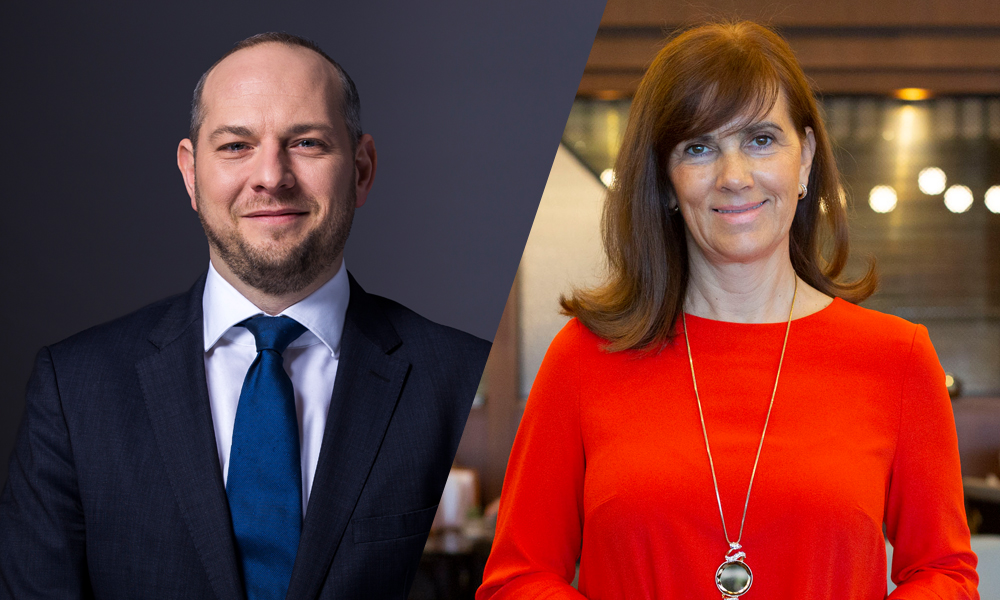
28 Apr Interview with Irisz Lippai-Nagy, CEO and Mr. Ákos Janza, President, American Chamber of Commerce (AmCham) Hungary
BF: What are AmCham Hungary’s main activities for 2025?/ What areas is AmCham Hungary focusing on in 2025?
Lippai-Nagy:
We have launched new committees, including a supply chain committee driven by our manufacturing members and another focused on digitalization. Digital transformation has emerged as the top priority in our member survey, shaping our five-year strategy for 2026–2030. To support this, we organized a major digital conference on May 28, covering compliance, workforce management, digital health data, cybersecurity and data privacy.
Additionally, we hosted an ESG masterclass this spring.
In October, we will host our 11th Business Meets Government Summit with the Hungarian Investment Promotion Agency—our flagship event. Our new Policy Agenda for 2026–2030, a key strategic document, will be launched at the summit.
BF: What are the key advocacy priorities of this policy agenda?
Lippai-Nagy: Many priorities from 2025 will carry over, such as tax simplification, reducing administrative barriers, and strengthening education through university-private sector collaboration. Innovation remains crucial, and healthcare is a major area of focus – not just for pharma and MedTech companies but for all employers, as workforce health directly impacts productivity.
Another key issue is labor availability and skills development, a challenge across the developed world. Sustainability will also be a major focus, including sustainable finance, business operations, and digitalization’s role in achieving these goals. These topics will be expanded in the policy agenda.
BF: How do you assess Hungary’s current economy, business environment, and capital markets?
Lippai-Nagy: In 2024, we anticipated strong economic growth, but it fell short of expectations. We are preparing discussions with the Ministry of National Economy to address this. One key question we’ll raise is: With projected growth at around 2–3%—up from just 0.6% last year—what measures will be taken to ensure this upward trend continues?
Our members highlight two major concerns: inflation, which remains a challenge for most businesses, and labor shortages, which are yet to be fully addressed. Although the year is already well underway, we still need clear policies to accelerate economic growth.
BF: AmCham represents over 300 U.S., international, and Hungarian companies. Given your ties to both Hungary and the U.S., how do you see trade and investment evolving amid leadership changes in the U.S.?
Janza: Over the past four years, political dynamics haven’t always been favorable for trade, but we expect improvement in 2025. The U.S. is Hungary’s fourth-largest investment partner, with over 1,000 American companies operating here, employing nearly 90,000 people. However, Hungary’s Eastern Opening policy in recent years has led to significant Asian investment—China in 2024 was the largest investor in terms of investment volume, contributing approximately €5–5.3 billion (50% of total FDI), followed by South Korea with $2.6 billion. At the same time, when it comes to the number of foreign projects, China and the United States were holding second place.
While diversification has its benefits, maintaining strong economic ties with the U.S. is essential. Hungary has around 100 companies working in research and development for the space industry, presenting valuable opportunities for U.S. partnerships. Though Hungary cannot match U.S. investment volume, strengthening trade and political relations remains a priority.
Key steps include proactive engagement between Hungarian businesses, policymakers, and U.S. counterparts. A crucial issue is negotiating a new double taxation agreement, which will take time but is necessary for a more predictable, competitive business environment.
Ultimately, trade relations are built on trust and dialogue. We must address concerns such as tariffs and Hungary’s ESTA status through open communication. We believe AmCham has a central role in fostering these discussions, ensuring a more competitive environment for both nations and the businesses we represent.
BF: Within the EU, do you think Hungary could play a major role as Europe’s key investment hub?
Janza: Hungary is a place where business thrives. I have great faith in Hungarian ingenuity—our ability to learn, problem-solve, and adapt. We excel in certain areas and have room to grow in others, but overall, Hungary is well-positioned to serve as a bridge within Europe.
Our foreign language skills, particularly in English, are strong, and Hungarians are known for their quantitative skills and common-sense approach. Over the years, we’ve climbed the value chain, and today, many AmCham members and business leaders hold global or regional positions from Hungary. This shift reflects how business no longer needs to be confined to traditional global hubs—especially with advancements in AI, generative AI, and the rise of remote work.
However, becoming a key investment hub requires further progress. Predictability, investment in education and healthcare, and a commitment to transparency—values we strongly advocate at AmCham—are essential. That said, Hungary remains highly competitive, with vibrant cities, an improving quality of life, and an attractive business environment.
Lippai-Nagy: Hungary isn’t just geographically central in Europe—it offers a unique blend of culture, history, and opportunity. People who come here for work often feel at home while being part of a dynamic and competitive business environment. It’s a place for young people and a place for the future.
Janza: At AmCham, our primary mission is to shape economic policy discussions and strengthen U.S.-Hungarian relations. My fellow board members and our team are doing a fantastic job in ensuring Hungary continues to evolve as a great place to live, work, and learn. We’re only here for a short time, but our actions today will define the future for generations to come.

Sorry, the comment form is closed at this time.